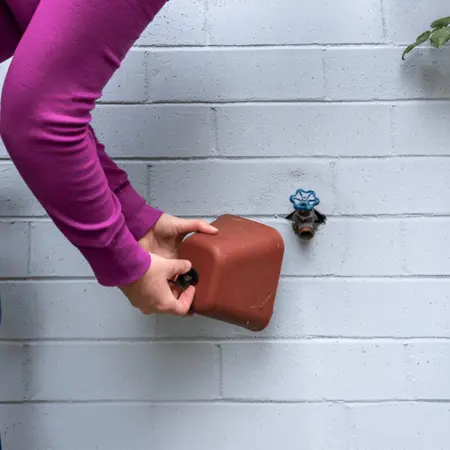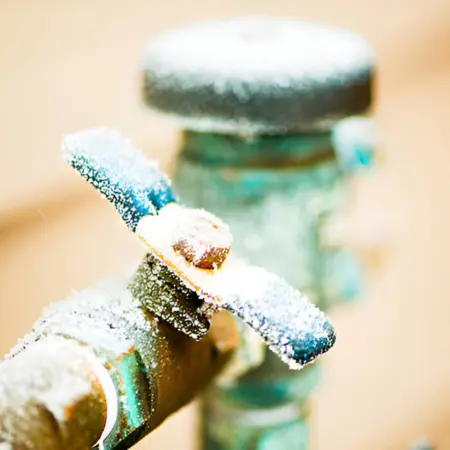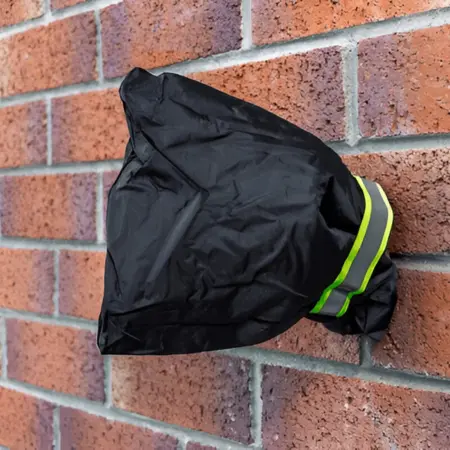Don’t let winter’s chill damage your outdoor faucets.
Freezing weather can cause pipes to crack and lead to costly repairs.
This guide shows you quick and simple ways to protect outdoor faucets and keep your faucets safe while keeping your wallet happy.
Key Takeaways
- Protecting outdoor faucets in winter prevents freezing and costly damage.
- Shut off the water supply and drain outdoor faucets to stop freezing.
- Insulate outdoor faucets with foam covers, pipe insulation, or towels.
- Faucet covers are affordable and provide extra protection from freezing.
- Frost-free faucets prevent freezing by keeping water deeper inside the pipe.
- Disconnect and store outdoor hoses to prevent freezing and damage.
- Drain sprinkler systems properly to avoid freezing and cracking.
- Seal gaps around windows and doors to protect indoor pipes from freezing.
- Let faucets drip to prevent indoor pipes from freezing in extreme cold.
- If a faucet freezes, thaw it carefully and call a plumber if there’s damage.
How To Protect Outdoor Faucets From Freezing
Protecting outdoor faucets in winter is important to avoid freezing and costly damage.
Steps like turning off the water, using covers, and adding insulation can greatly help.
Here’s how to do it.
1. Shut Off The Water Supply
To protect your outdoor faucets, the first step is to turn off the water supply.
Look for the shut-off valve inside your home, usually in the basement, crawl space, or near the water meter.
Turn it off completely to stop water from flowing to the outdoor faucet.
After that, open the faucet outside and drain any remaining water.
Draining the lines is important because water left inside can freeze and expand.
This can crack the pipes and cause costly repairs.
2. Insulate (Cover) Outdoor Faucets
Insulating outdoor faucets helps keep them safe from freezing.
You can use foam faucet covers, pipe insulation, and even old towels wrapped around the faucet.
Foam covers are very popular because they are easy to use.
They also provide great protection for faucets.
Make sure the faucet is dry, then cover it tightly with insulation.
This simple step helps keep the cold out and prevents ice from forming inside the faucet.

3. Use Faucet Covers
Faucet covers are a quick and effective solution for winter protection.
These covers are durable materials that shield your faucet from freezing air.
They are affordable and easy to find at most hardware stores.
When choosing a cover, make sure it fits snugly over your faucet.
Specialized covers often come with adjustable straps to ensure a tight fit.
A faucet cover gives extra protection in winter.
It is very helpful in places with freezing temperatures.
4. Install A Frost-Free Faucet
A frost-free faucet is a smart, long-term solution for avoiding frozen pipes.
These faucets are designed to keep water deeper inside the pipe, away from freezing air.
Installing one involves replacing your existing faucet with a frost-free model.
While it may need some effort and professional help, the peace of mind it brings is worth it.
Additional Tips For Winterizing Your Plumbing
Winterizing your plumbing is key to preventing damage from freezing temperatures.
Here are two additional tips to protect your outdoor plumbing.
1. Protecting Outdoor Hoses And Sprinkler Systems
Before winter hits, disconnect all outdoor hoses and store them inside.
Leaving hoses outside can cause the water inside to freeze, damaging the hose and the faucet.
For sprinkler systems, make sure to drain them properly.
Some systems have a valve to release any remaining water.
If you have an irrigation system, consider using a blow-out method to remove all water from the pipes.
This will help prevent freezing and cracking.

2. Tips For Preventing Frozen Pipes Inside Your Home
Seal gaps and cracks around windows, doors, and walls to keep pipes inside from freezing.
Cold air can enter and freeze pipes, especially in unheated areas like basements.
You can also leave a small stream of water running from faucets during extremely cold nights.
This keeps water moving and prevents it from freezing in the pipes.
Another tip is to open cabinet doors under sinks to allow warm air to reach the pipes.
If you’re not using a certain area, you can turn off the water supply to those pipes.
This helps avoid the risk of freezing.
What To Do If Your Outdoor Faucet Freezes
If your outdoor faucet freezes, it’s important to melt it safely to avoid damage.
Here’s how to fix it and when to call a plumber for help.
1. How To Safely Thaw (Melt) Frozen Outdoor Faucets
If your outdoor faucet freezes, you should first turn off the water supply to the faucet.
This will stop any more water from freezing inside the pipe.
Next, carefully thaw the faucet.
You can use a hairdryer on a low heat setting and move it back and forth over the frozen area.
Never use an open flame, as this can cause damage to the pipe or the surrounding area.
Wrap the faucet with warm towels or heat tape to gently thaw the frozen parts.
Be patient, as the ice may take some time to melt completely.

2. When To Call A Plumber For Assistance (Help)
If the faucet doesn’t thaw after trying these methods and you notice any cracks or leaks, it’s time to call a plumber.
A professional can safely inspect the faucet and pipes for damage.
If the pipe has burst and there is a serious problem, a plumber can fix it quickly and prevent further damage.
Don’t force the thawing process, as it could worsen things.
It’s better to get expert help if you are unsure or the problem is too severe.
Contact us at OP Plumbing Hub for high-quality services.
Conclusion
This article discusses tips on how to prevent outdoor faucets from freezing.
Protecting your outdoor faucets from freezing is simple but important.
You can prevent costly damage by turning off the water, covering the faucets, and using covers.
Don’t forget to check for frozen pipes and melt them safely if needed. If the problem continues, contact us at OP Plumbing Hub for expert services.
